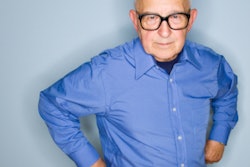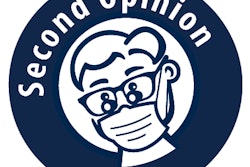
As dentists, we know the impact of oral health on overall health. As specialized doctors, we have an implicit responsibility to provide quality care for our growing population of aging patients -- one highly vulnerable to the consequences of poor oral health -- and we must understand how their needs differ from the average patient.
To adapt our practices to aging patients, we must look at common clinical problems this population might face. What we see is that changes in the body may have adverse effects on the mouth as we age. Furthermore, this problem is compounded by our bodies becoming less able to fend off problems that arise from poor oral health.
5 problems
As healthcare providers, it is our responsibility to address the situations and concerns of an aging population, while keeping in mind that these patients are often dependent on family members or aides for daily support. They can be nervous about tasks that need to get done throughout the day -- even something seemingly as simple as brushing their teeth -- and it's imperative that we provide the required care and also the peace of mind and gentle guidance needed.
Here are five common problems these patients may be experiencing and what they mean for your patients and your practice.
1. Accelerated bone loss
 Niveditha Rajagopalan, DMD.
Niveditha Rajagopalan, DMD.Bone loss is a common ailment as we age, and the bone surrounding our teeth is no exception. This creates a heightened risk of periodontal problems, according to a 2012 study in the Journal of Dentistry of Tehran University of Medical Sciences (Autumn 2012, Vol. 9:4, pp. 256-264). The loss of bone is intensified with age, and bone is also formed more slowly in older patients. Combined, these factors can affect aging patients with periodontitis, and bone loss can become irreversible if long-term periodontitis is untreated.
2. Cancer treatments and root surface decay
A 2015 study found that aging patients who have been treated with radiation or chemotherapy are also more susceptible to decreased saliva output and other protective mechanisms for teeth (Head and Neck, April 2015, Vol. 37:4, pp. 567-572). Older adults are more prone to root surface decay, especially those who undergo cancer treatment. Without an emphasis on diagnosing and treating root surface decay, this population can become vulnerable to nonrestorable cavities.
3. Decreasing saliva levels and medications
As with bone density, saliva output also decreases with age. Salivary gland function is altered by some medications prescribed to aging patients, which results in dry mouth symptoms. These combined factors mean these patients are often more prone to cavities.
4. Diabetes and slow healing
“We can take simple yet efficient steps to help put our patients at ease.”
Diabetes, a fairly common disease, is linked to periodontal disease and slow healing. Aging patients with diabetes should be rigorous with their dental visits. If a problem should arise and require a treatment such as an extraction, the recovery process can be prolonged.
5. Susceptibility to illness
General health should be treated as a high priority for anyone, but it is extremely important for older patients to maintain a healthy body weight and proper diet. Vitamin D deficiency is common in the these patients, and a link between vitamin D deficiency and tooth loss has been established (Journal of Dental Research, October 2009, Vol. 88:10, pp. 894-903). If patients are limited in their ability to properly intake nutrients, their body becomes less capable in fending off disease, including dental disease.
As clinical providers, we can take simple yet efficient steps to help put our patients at ease. Implementing these into your daily routine can help improve patient acceptance, satisfaction, and the success of your practice:
- Know their chief complaint. When your dental assistant greets and seats a patient, instruct your team member to inquire about the reason for the visit so you don't have to ask your patient.
- Get on the patient's level and explain treatment at the eye level to help your patient feel more comfortable.
- If a patient is confined to a wheelchair or has mobility issues, your team and you can provide quality dental care while accommodating any limited mobility.
Dr. Niveditha Rajagopalan is the lead dentist at Aspen Dental Associates of NEPA in Hazleton, PA.
The comments and observations expressed herein do not necessarily reflect the opinions of DrBicuspid.com, nor should they be construed as an endorsement or admonishment of any particular idea, vendor, or organization.



















